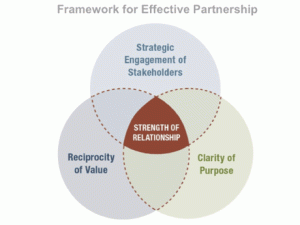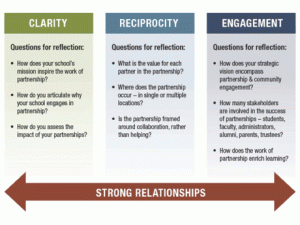Rethinking Independent Schools in the 21st Century
I attended public schools from kindergarten through 12th grade, as well as a public university, and I am the parent of public school students. As the child of immigrants who counted public school access in their equation of the American Dream, I had minimal exposure to private schools growing up, and as a young parent I wanted my children to embrace diversity, thinking this would be found in public, not private, schools.
Since switching my professional attention to education over a decade ago, I've been schooled in the modern reality of independent (private) schools' missions. Generalizations that label these schools as elitist, tradition-bound and homogenous probably aren't based on a recent first-hand look. I've found they have the leeway to get out in front on equity, recruiting deserving students from diverse backgrounds and locations, rather than being governed by the zip code in which their building happens to be located. Their independence is spurring innovation that can benefit education for the entire U.S., not just a tiny swath of privileged students. Whatever your commitment to public education, if your aim is to learn from the best schools in the world, add innovative independent schools to that mix.
I've been visiting independent schools across the United States to discuss global education with them, and also recently attended conferences of the National Coalition of Girls Schools (NCGS) and the National Association of Independent Schools (NAIS). Here are a few principles and initiatives from which any school can learn.
1. Active Collaboration
Though it’s a vital 21st century skill, many students and educators haven't seen real collaboration. A Skype call with a school far away may represent good exposure to different places and cultures, but without integrating it into a learning plan, it's more of a memory than a skill-building endeavor, and divvying up topics for a group presentation fall short of collaboration if problems aren't being solved together.
Here’s where NAIS' Challenge 20/20 can help. Challenge 20/20 is an Internet-based program that pairs classes at any grade level (K-12) at U.S. private, public or charter schools with a counterpart class in a school abroad. Together, the teams of two or three schools find local solutions to one of 20 global problems. Schools do not have to be NAIS members to participate. There is no cost and no travel required. The effort builds momentum by working with expert organizations dedicated to collaboration like TakingITGlobal and iEARN's Connect All Schools initiative. I've interviewed several teachers in the Challenge 20/20 network. and not only has it expanded possibilities for their students, but also reignited their own teaching practice.
2. Partnership, Innovation and Opportunity
Effective partnership helps scale innovation and educational opportunity. Closely related to collaboration is partnership. The National Network of Schools in Partnership (NNSP), active at both NCGS and NAIS, has a vision of partnership that encompasses equity, social justice, and sharing or innovating best practices for high-impact and scalability.
One outstanding example of NNSP's vision in action is found in Roland Park Country School's (RPCS) commitment to opening an urban charter school for middle school girls in Baltimore in 2015. This is an outgrowth of years of reflection and action at RPCS around their responsibility to contribute to the broader educational life of their wider community. The school already has over a decade's experience opening its campus to public school enrichment camps and initiatives like Growing Girls and Gardens, where they are taking best practices from their venerable independent school for girls, working with the school district, and applying the learning to benefit some of the city's neediest students -- walking the walk to offer outstanding education and opportunity for promising girls. RPCS' example also shows a key point -- their involvement is not a one-sided experiment in charity. They take reciprocity seriously, reflecting on how to authentically implement it every step of the way. As a result, their school community is enhanced and seems energized, their learning is more real and humble, their students gain personal, human connections and a commitment to their city . . . and that’s just the beginning.
At the recent NAIS Annual Conference, NNSP unveiled their framework for effective school partnerships. Drawn from the practice of schools across the country, the framework is meant to serve as a tool for reflections and discussion among school leaders and partners, with relationship at the core of every stage in the process.


3. Positive Character Traits
Developing positive character traits takes effort and focus, and forms a foundation of the entire school experience. Schools with a clear sense of mission and commitment to educating the whole child tend to emphasize the acquisition of positive virtues. Sessions on varying aspects of empathy, creativity, grit and inclusion were abundant at the NCGS and NAIS conferences, reflecting initiatives at the schools. To learn more about these traits, the new film The Science of Character offers a good overview and ways to take action.
4. Diverse Experiences
Engage learners through diverse experiences. Go beyond the worksheet. Experiential education has gone from a narrow focus on the fringes of school to an experience that encompasses:
- Outdoor and adventure education
- Global education and travel
- Service learning
- Sustainability initiatives
- Leadership development
Independent schools have run with this sort of "3D" learning, with stewardship coming from the growing Independent Schools Experiential Education Network (ISEEN). ISEEN sees itself as "an international learning laboratory and networking opportunity through which independent school experiential educators and administrators can share their program challenges and successes, learn of and from model programs, and explore the developing role of experiential practices within our educational communities." For example, at the Hawken School in Cleveland, there's a commitment for students "to gain authentic experience in the real world to make meaning from knowledge. We consider nature, Cleveland and the global community to be extensions of our classrooms."
Other forward-looking initiatives, like design thinking and global education benchmarking, have found early adopters among independent schools.
Do any of these initiatives seem doable at your school? Would your school be open to embracing innovation coming out of independent schools, or engaging in a public-private partnership to advance 21st century skills? If you took one step toward deeper collaboration, wider partnership, active character development, or engaged experiential education, what might that be?
